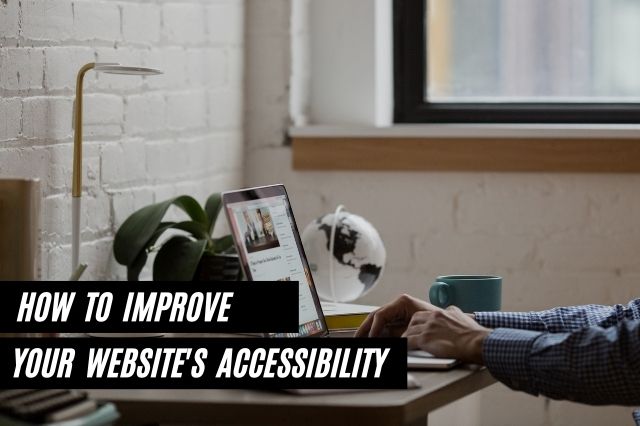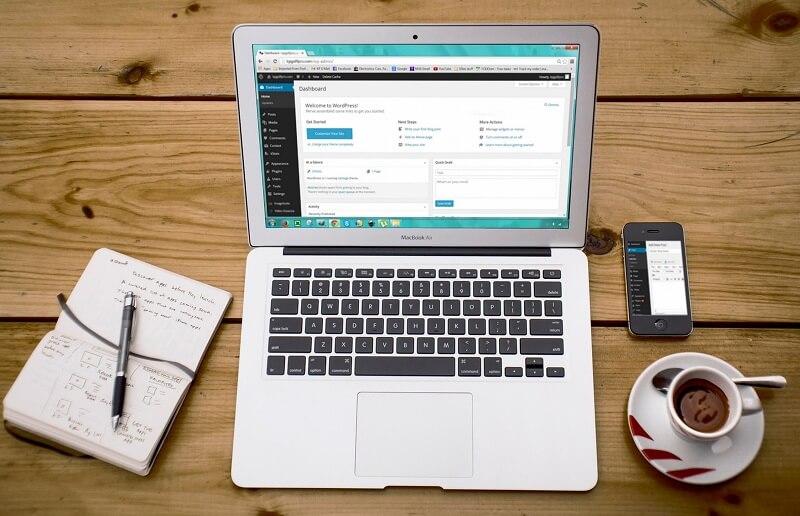How to improve your website’s accessibility- 8 Easy Ways.

All too often designers and developers spend too much time on creating a beautiful website that they forget about making a functional one that is accessible to all, including those with disabilities. Not only is making your website accessible to all a legal requirement, but it’s also a moral thing to do and it could have a major financial benefit for your business. So in this article, I will tell you some of the best easy ways to improve your website’s accessibility.
97% of websites are not complying with the global web regulations. This shows that more needs to be done by businesses to accommodate users with additional needs.
Why improve the accessibility of your website?
Improving the accessibility of your website, first of all, opens your business up to a larger consumer base which could result in higher profits. Improving the accessibility of your website may also improve your website’s search engine optimization as your website is easier to understand from a search engine’s point of view.
With more traffic coming into your website, and more visitors being able to read your content the higher the chance of a sale. Companies such as Tesco have seen an increase in sales when implementing accessibility solutions.
Finally, Improving your website so disabled users can use it is morally right and also a legal requirement, failing to make your website accessible to disabled users can open your business to lawsuits, just ask companies such as Netflix, Domino’s Pizza, and Target who have all been sued for having a website that wasn’t accessible to disabled users.
How do you improve your website’s accessibility?
There are two options to improve your website’s accessibility. The first option is to build a website with accessibility in mind or you can install third-party tools that can help disabled users access your website.
If you build your website with accessibility in mind here are some tips that can help.
1) Choosing an accessible content management system.

A content management system as the name suggests is a back-end tool on a website that handles your databases and the content that is shown on the front end of the site.
One of the most common content management systems is WordPress and as a CMS out of the box it is accessible, but when users start creating their layouts and designs that is when you can run into problems.
With WordPress, they use a plugin system that allows you to install third-party software, and often this is useful. However, this third-party software isn’t developed by you so you may not have an understanding of what is going on under the code so often the code doesn’t help with the accessibility of your website.
With that said there are also third-party accessibility plugins that can be added to your site to help with accessibility issues.
2) Use the correct semantic markup.
Semantic markup describes what an object is to a browser and a developer. Using the correct markup can help with software such as screen readers.
An example of semantic markup include: <form>, <table> and <article> as they clearly describe the data that is going to populate them.
HTML5 has many instances of semantic markup that can be used to help with screen reading technology, you can see more examples on the W3Schools website.
3) Tag your images appropriately.
Screen reading software provides those with visual impairments a way of browsing the internet. This technology does a very good job of letting a user know what the page is about, however, they still have their limitations.
Screen reading software cannot describe what an image is of or read the text within an image. For this reason, developers should tag images on their websites in the correct way. Screen readers can understand the ALT text of an image and filling this incorrectly will help disabled users understand your page a little more.
ALT tags can be abused by marketers as they believe it’s a search engine ranking factor. A marketer may tag the images on your website with the following ALT text: “shoes for sale”. While someone concerned with the accessibility of a site would use the ALT text: “brown leather shoes worn by a man in an office setting”.
From the example above you can see the clear differences from a marketing perspective to an accessibility one.
4) Not everyone uses a mouse, so plan accordingly.
Users with mobility issues may not be able to use a mouse with the precision needed to browse the internet. People with mobility issues will use different devices such as keyboards, mouth sticks, and head wands to access the internet.
Even with the above technology, accessing some websites is impossible due to them having complex layouts. Complex layouts can include drop-down navigations, complex animations, or even something as simple as turning off CSS styling which shows the web element you are focused on.
Some users will have to cycle through elements on a website by clicking a key on the keyboard, with non-accessible sites it’s next to impossible to see what element you are on and where you can go next. The best explanation for this is trying to use a mouse without the mouse pointer appearing on the screen.
5) Understand and use ARIA

Accessible Rich Internet Applications or ARIA for short outlines how you should make the changes to your website so that assistive technology can be used on it. The guidelines are useful for defining how dynamic content should be served on your website.
You can learn how to use ARIA on your website with the W3C here.
6) Choose the colors of your website carefully
There have been countless articles published on color theory over the years which discuss how certain colors make people feel and can help them further along the buying process.
If you believe in color theory or not, one thing is for certain is that color can play a huge role to improve your website’s accessibility. Bright colors can make the text on your website harder to read for those with visual disabilities, while colors of the same contrast can have a similar effect.
When deciding on the colors of your website you will need to consider your branding. However, if your branding is problematic for disabled users you will need to come up with a solution to fix it.
7) Use subtitles on your videos
Companies may use video explainers on their website to show how their product solves a problem but many of them don’t use captions to help their readers who have auditory issues.
Adding captions to your videos isn’t difficult or even expensive as you can hire a freelancer to transcribe them.
Companies like Youtube will add captions to your videos automatically, but as they are computer-generated they aren’t always correct and can leave your visitors confused with the message you were trying to share.
Captions are even useful to those without auditory issues as some people watch videos while commuting and often have them muted. Captions are a good way of understanding what is going on without disturbing others too.
8) Third-party tools

Depending on the size of your website, sometimes it isn’t possible to go through it and make the changes mentioned above. On the other hand, you may not have the budget to put these changes in place.
This is understandable, but realise you are throwing money away by not catering to disabled users and you could lose money if you were ever taken to court over your website.
Thankfully there are third-party tools that can be installed to make these changes for you.
Some of the tools that can be used are as simple as installing them and letting them do the rest of the work. The best thing about these tools is that they are lightweight and don’t affect the page load speed of your website either. Users without accessible issues won’t be affected while those who do need extra help will be able to browse your website much easier.
The only downside of this software if you can call it that is they often require monthly fees but considering how much time the software saves you they aren’t expensive either. Further savings can be made by paying yearly. If you don’t have a budget for software there are free versions out there but they will require more input on your behalf.
Conclusion
Providing an accessible solution to disabled users is not only morally correct, it’s also a legal requirement.
Disabled users already have a challenging life so if you can make their online browsing experience better with a little bit of effort it’s something that we should all try to do. Smaller sites can make the changes above themselves while commercial websites can invest in accessibility software which can make them accessible in hours.
If you would like to see a list of the best accessible software on the market right now we have included a guide further up the page.

